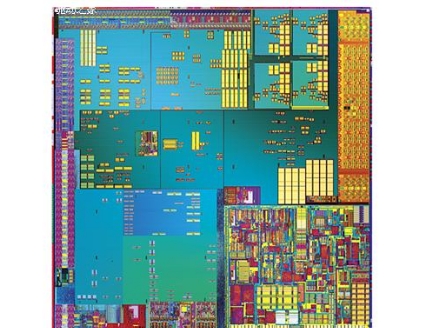In the ever-evolving landscape of electronic component technologies, System-on-a-Chip (SoC) has emerged as a transformative force, enabling the integration of multiple functional blocks—such as processors, graphics units, memory controllers, and communication interfaces—onto a single semiconductor die. This integration not only reduces the size and power consumption of electronic devices but also unlocks new levels of performance and functionality, driving innovation across various industries.
Core Technical Advantages
SoC technology's most significant strength lies in its high integration density. By combining diverse components on a single chip, SoCs eliminate the need for multiple discrete chips and the associated interconnections, reducing the overall board space by up to 70%. For instance, Apple's A-series SoCs integrate CPU cores, GPU units, neural engines, and image signal processors, enabling iPhones to achieve high computing performance while maintaining a slim form factor. The latest 5-nanometer manufacturing process further boosts the transistor count to over 15 billion per chip, enhancing processing capabilities exponentially.
In terms of power efficiency, SoCs outperform traditional multi-chip solutions significantly. With components located in close proximity, signal transmission distances are minimized, reducing power losses due to capacitance and resistance. Qualcomm's Snapdragon 8 Gen series SoCs, used in high-end Android smartphones, achieve up to 30% lower power consumption during multitasking compared to devices using separate chips for processing and graphics. The integrated power management units in SoCs can also dynamically adjust the voltage and clock speed of individual components, optimizing energy usage based on workload requirements.
SoCs also offer unparalleled flexibility through heterogeneous integration. By combining different types of computing cores, such as ARM-based CPUs, dedicated AI accelerators, and digital signal processors (DSPs), SoCs can handle a wide range of tasks efficiently. NVIDIA's Jetson series of edge computing SoCs integrate GPU cores optimized for deep learning inference, enabling real-time object detection in surveillance cameras with up to 10 times faster processing speeds compared to traditional CPU-only solutions.

Disruptive Applications
In the smartphone industry, SoCs have been the cornerstone of technological advancements. Samsung's Exynos SoCs power its flagship Galaxy smartphones, providing high-resolution display support, 8K video recording capabilities, and advanced camera processing. The integrated 5G modems in these SoCs enable download speeds of up to 7.5 Gbps, a 5-fold increase compared to 4G networks. This has transformed smartphones from communication devices into powerful multimedia and computing platforms.
The automotive sector is undergoing a revolution driven by SoC technology. Tesla's Full Self-Driving (FSD) computer, based on a custom-designed SoC, processes data from multiple cameras, radar, and lidar sensors in real-time to enable autonomous driving features. With a computing power of 144 TOPS, the SoC can execute over 144 trillion operations per second, making split-second decisions to ensure vehicle safety. Additionally, SoCs in modern cars power in-vehicle infotainment systems, providing seamless connectivity and high-quality audio-visual experiences.
In the Internet of Things (IoT) domain, SoCs enable the development of smart, low-power devices. MediaTek's MT8167 SoC, used in smart home hubs, integrates Wi-Fi, Bluetooth, and Zigbee communication interfaces, along with a quad-core CPU, to manage and control multiple IoT devices. This single-chip solution reduces the cost of smart home products by 20% while consuming only 1.5 W of power during operation, making IoT technology more accessible and energy-efficient.
Challenges
Despite their numerous advantages, the widespread adoption of SoCs faces several challenges. Design complexity is a major hurdle, as integrating multiple components onto a single chip requires advanced design tools and expertise in various disciplines, including analog and digital circuit design, power management, and signal integrity. According to a report by Semiconductor Engineering, the average development time for a new SoC design has increased to 18 - 24 months, with costs reaching up to $100 million.
Thermal management also poses a significant challenge. As the integration density and performance of SoCs increase, heat dissipation becomes more difficult. High-performance SoCs, such as those used in gaming consoles, can generate temperatures exceeding 90°C under heavy loads. To address this, manufacturers are developing advanced cooling solutions, like liquid cooling systems and novel thermal interface materials, but these add to the overall cost and complexity of the devices.
Compatibility and standardization issues also hinder the growth of SoC ecosystems. With different manufacturers using proprietary interfaces and protocols, integrating SoCs with external components can be a complex task. Industry efforts are underway to establish common standards, such as the Universal Chiplet Interconnect Express (UCIe), which aims to simplify the integration of different chiplets and enhance interoperability, but widespread adoption is still in progress.
- Prev:None
- Next:Silicon Carbide Power Modules
-
Wechat

-
Whatsapp
